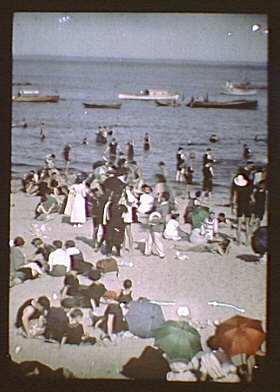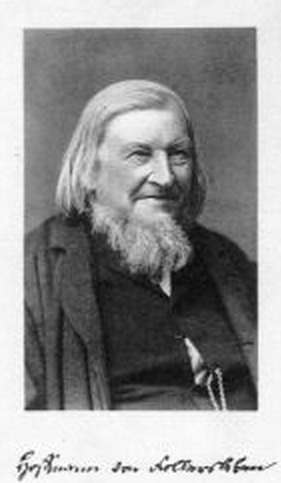|
Chester Hills
Chester Hills was author of "The Builder's Guide", an architectural pattern book published in 1846, which, like those of Minard Lafever, influenced architecture in the United States. It is a "practical treatise" on Greek and Roman style architecture. Two buildings influenced are in Rye, New York: Lounsberry and the 1838 Peter Augustus Jay House within the Boston Post Road Historic District., See also *1838 Peter Augustus Jay House The Jay Estate is a 23-acre park and historic site in Rye, New York, with the 1838 Peter Augustus Jay House at its center. It is the keystone of the Boston Post Road Historic District (New York), Boston Post Road Historic District, a National Hist ... References 1798 births 1854 deaths American architecture writers 19th-century American architects {{US-architect-stub ... [...More Info...] [...Related Items...] OR: [Wikipedia] [Google] [Baidu] |
Pattern Book
A pattern book, or architectural pattern book, is a book of architectural designs, usually providing enough for non-architects to build structures that are copies or significant derivatives of major architect-designed works. A number of pattern books have been very influential in spreading architectural styles. An early author of pattern books was American architect Minard Lafever. In 1829 he published ''The Young Builders' General Instructor'', followed by ''Modern Builders' Guide'' in 1833, ''The Beauties of Modern Architecture'' in 1835 and ''The Architectural Instructor'' in 1850. His pattern books were influential in spreading his Greek Revival style, which is known as the first major non-British high architectural style in the United States. The style was popular for being not British, and for association with Greek history, ancient and modern, and was greatly facilitated by the pattern books. Orson Squire Fowler notably made a mark on American architecture when he tou ... [...More Info...] [...Related Items...] OR: [Wikipedia] [Google] [Baidu] |
Minard Lafever
Minard Lafever (1798–1854) was an American architect of churches and houses in the United States in the early nineteenth century. Life and career Lafever began life as a carpenter around 1820. At this period in the United States there were no professional schools of architecture and few who claimed the title architect. Most structures were designed and put up by builders, and architects and builders were trained by working under master builders. In 1829 Lafever published ''The Young Builders' General Instructor,'' followed by ''Modern Builders' Guide'' in 1833, ''The Beauties of Modern Architecture'' in 1835 and ''The Architectural Instructor'' in 1850. His pattern books were influential in spreading his Greek Revival style. Three of his buildings which were subsequently designated National Historic Landmarks are: * First Presbyterian Church (Sag Harbor) (tall steeple destroyed in a hurricane) * St. Ann and the Holy Trinity Church * Sailors' Snug Harbor Other notable ... [...More Info...] [...Related Items...] OR: [Wikipedia] [Google] [Baidu] |
Rye, New York
Rye is a coastal suburb of New York City in Westchester County, New York, United States. It is separate from the Rye (town), New York, Town of Rye, which has more land area than the city. The City of Rye, formerly the Village of Rye, was part of the Town until it received its Municipal charter, charter as a city in 1942, making it the youngest city in the New York (state), State of New York. Its population density for its 5.85 square miles of land is roughly 2,729.76/sq mi. Rye is notable for its waterfront which covers 60 percent of the city's six square miles and is governed by a waterfront act instituted in 1991. Located in the city are two National Historic Landmarks: the Boston Post Road Historic District (Rye, New York), Boston Post Road Historic District was designated a National Historic Landmark by the National Park Service in 1993; its centerpiece is the Jay Estate, the childhood home of John Jay, a Founding Fathers of the United States, Founding Father and the first C ... [...More Info...] [...Related Items...] OR: [Wikipedia] [Google] [Baidu] |
1838 Peter Augustus Jay House
The Jay Estate is a 23-acre park and historic site in Rye, New York, with the 1838 Peter Augustus Jay House at its center. It is the keystone of the Boston Post Road Historic District, a National Historic Landmark District (NHL) created in 1993. and The site is the surviving remnant of the farm where US Founding Father, John Jay (December 12, 1745 – May 17, 1829), grew up. It is also the place where he returned to celebrate the end of the Revolutionary War after he negotiated the 1783 Treaty of Paris with fellow peacemakers, John Adams and Benjamin Franklin.Hubbard, Elbert, "John Jay," ''Magazine of American History,'' New York, January, February, March Issue 1902, p.27. The preserved property is located on the south side of the Boston Post Road (US 1) and has a view of Milton Harbor. The Jay Estate is a recognized historical resource. It is part of a 10,000+ year old Indigenous peoples archaeological site and overlooks the oldest man-managed meadow on record in Ne ... [...More Info...] [...Related Items...] OR: [Wikipedia] [Google] [Baidu] |
Boston Post Road Historic District (Rye, New York)
The Boston Post Road Historic District is a National Historic Landmark District in Rye, New York, and is composed of five distinct and adjacent properties. Within this landmarked area are three architecturally significant, pre-Civil War mansions and their grounds; a 10,000-year-old Indigenous peoples site and viewshed; a private cemetery, and a nature preserve. It is one of only 11 National Historic Landmark Districts in New York State and the only National Historic Landmark District in Westchester County. It touches on the south side of the nation's oldest road, the Boston Post Road ( US 1), which extends through Rye. A sandstone Westchester Turnpike marker "24", inspired by Benjamin Franklin's original mile marker system, is set into a wall that denotes the perimeter of three of the contributing properties. The district reaches to Milton Harbor of Long Island Sound. Two of the properties included in the National Park designation are anchored by Greek Revival buildings; the t ... [...More Info...] [...Related Items...] OR: [Wikipedia] [Google] [Baidu] |
1798 Births
Events January–June * January – Eli Whitney contracts with the U.S. federal government for 10,000 muskets, which he produces with interchangeable parts. * January 4 – Constantine Hangerli enters Bucharest, as Prince of Wallachia. * January 22 – A coup d'état is staged in the Netherlands ( Batavian Republic). Unitarian Democrat Pieter Vreede ends the power of the parliament (with a conservative-moderate majority). * February 10 – The Pope is taken captive, and the Papacy is removed from power, by French General Louis-Alexandre Berthier. * February 15 – U.S. Representative Roger Griswold (Fed-CT) beats Congressman Matthew Lyon (Dem-Rep-VT) with a cane after the House declines to censure Lyon earlier spitting in Griswold's face; the House declines to discipline either man.''Harper's Encyclopaedia of United States History from 458 A. D. to 1909'', ed. by Benson John Lossing and, Woodrow Wilson (Harper & Brothers, 1910) p171 * March ... [...More Info...] [...Related Items...] OR: [Wikipedia] [Google] [Baidu] |
1854 Deaths
Events January–March * January 4 – The McDonald Islands are discovered by Captain William McDonald aboard the ''Samarang''. * January 6 – The fictional detective Sherlock Holmes is perhaps born. * January 9 – The Teutonia Männerchor in Pittsburgh, U.S.A. is founded to promote German culture. * January 20 – The North Carolina General Assembly in the United States charters the Atlantic and North Carolina Railroad, to run from Goldsboro through New Bern, to the newly created seaport of Morehead City, near Beaufort. * January 21 – The iron clipper runs aground off the east coast of Ireland, on her maiden voyage out of Liverpool, bound for Australia, with the loss of at least 300 out of 650 on board. * February 11 – Major streets are lit by coal gas for the first time by the San Francisco Gas Company; 86 such lamps are turned on this evening in San Francisco, California. * February 13 – Mexican troops force William Walker ... [...More Info...] [...Related Items...] OR: [Wikipedia] [Google] [Baidu] |
American Architecture Writers
American(s) may refer to: * American, something of, from, or related to the United States of America, commonly known as the "United States" or "America" ** Americans, citizens and nationals of the United States of America ** American ancestry, people who self-identify their ancestry as "American" ** American English, the set of varieties of the English language native to the United States ** Native Americans in the United States, indigenous peoples of the United States * American, something of, from, or related to the Americas, also known as "America" ** Indigenous peoples of the Americas * American (word), for analysis and history of the meanings in various contexts Organizations * American Airlines, U.S.-based airline headquartered in Fort Worth, Texas * American Athletic Conference, an American college athletic conference * American Recordings (record label), a record label previously known as Def American * American University, in Washington, D.C. Sports teams Soccer * ... [...More Info...] [...Related Items...] OR: [Wikipedia] [Google] [Baidu] |

.jpg)

